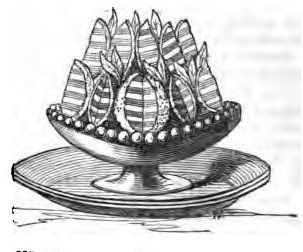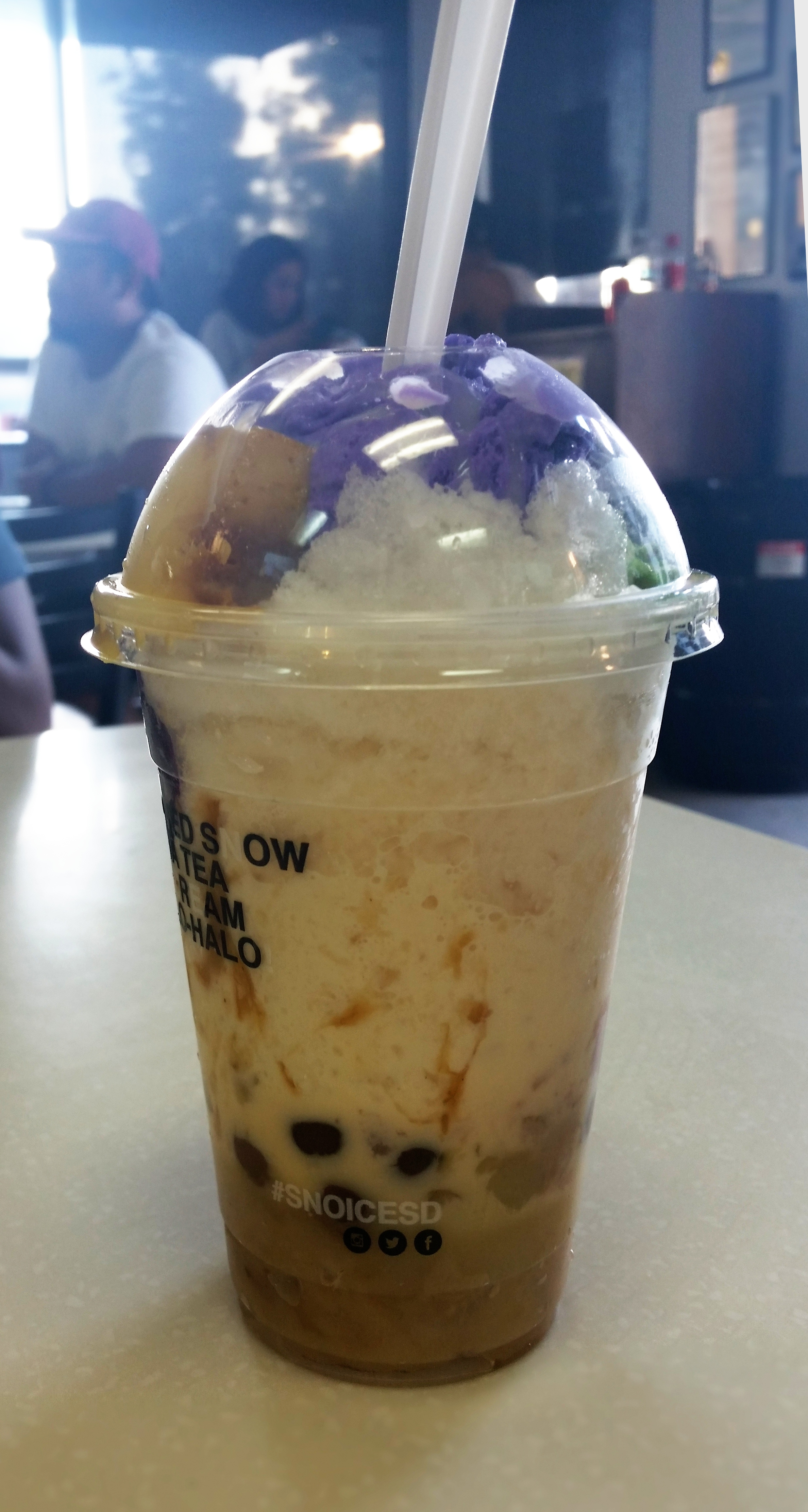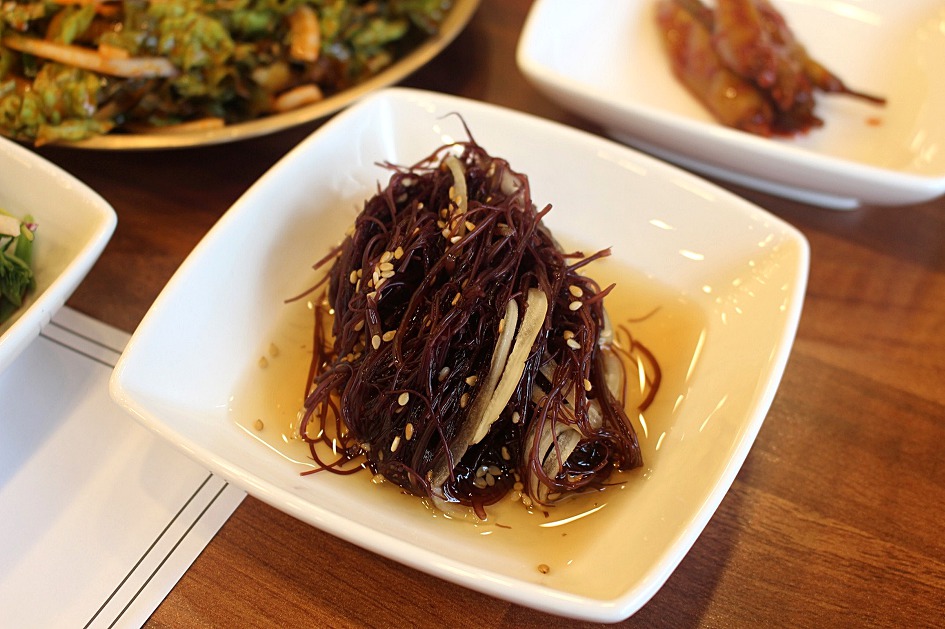|
Gulaman
''Gulaman'', in Filipino cuisine, is a bar, or powdered form, of dried agar or carrageenan used to make jelly-like desserts. In common usage, it also usually refers to the refreshment '' sago't gulaman'', sometimes referred to as ''samalamig'', sold at roadside stalls and vendors. Description ''Gulaman'' is the Filipino culinary use of agar, which is made of processed '' Gracilaria'' seaweed; or carrageenan derived from other farmed seaweed species like '' Eucheuma'' and ''Kappaphycus alvarezii'' which were first cultivated commercially in the Philippines. It is usually sold dehydrated and formed into foot-long dry bars which are either plain or coloured. It is also commonly sold in powder form. Uses ''Gulaman'' bars are used in the various Filipino refreshments or desserts such as ''sago at gulaman'', '' buko pandan'', agar flan, ''halo-halo'', ''fruit cocktail jelly'', different varieties of Filipino fruit salads, black ''gulaman'', and red ''gulaman''. Differences betw ... [...More Info...] [...Related Items...] OR: [Wikipedia] [Google] [Baidu] |
Samalamig
Samalamig, also known as palamig, is a collective term for various Filipino sweet chilled beverages that usually include jelly-like ingredients. They come in various flavors, and are commonly sold by street vendors as refreshments. Typical ingredients of the drinks include '' gulaman'' (agar), sago pearls, kaong, tapioca pearls, nata de coco, and coconut (including macapuno). They are usually anglicized as pearl coolers or pearl and jelly coolers. Samalamig may also include various chilled fruit juices (usually with chunks of fruit), chocolate, and coffee drinks, regardless if jellies are added, that are also typically sold by samalamig vendors. Name The name "samálamig" comes from ''sa'', meaning "for; to; at", and ''malamíg'', an adjective meaning "cold, chilly" in Tagalog. "Sa malamig" may thus loosely mean "for cold (drinks); at a cold place; chilled". "Sa malamig" might have come from the calls of ambulant vendors, telling people to come and get cold drinks, i.e. " it ... [...More Info...] [...Related Items...] OR: [Wikipedia] [Google] [Baidu] |
Filipino Cuisine
Filipino cuisine ( fil, lutong Pilipino/pagkaing Pilipino) is composed of the cuisines of more than a hundred distinct ethnolinguistic groups found throughout the Philippine archipelago. A majority of mainstream Filipino dishes that compose Filipino cuisine are from the food traditions of various ethnolinguistic groups and tribes of the archipelago, including the Ilocano, Pangasinan, Kapampangan, Tagalog, Bicolano, Visayan, Chavacano and Maranao ethnolinguistic groups. The styles of preparation and dishes associated with them have evolved over many centuries from a largely indigenous (largely Austronesian) base shared with maritime Southeast Asia with varied influences from Chinese, Spanish and American cuisines, in line with the major waves of influence that had enriched the cultures of the archipelago, as well as others adapted to indigenous ingredients and the local palate. [...More Info...] [...Related Items...] OR: [Wikipedia] [Google] [Baidu] |
Gelatin Dessert
Gelatin desserts (also Jelly or Jello) are desserts made with a sweetened and flavoured processed collagen product (gelatin). This kind of dessert was first recorded as jelly by Hannah Glasse in her 18th-century book ''The Art of Cookery'', appearing in a layer of trifle. Jelly is also featured in the best selling cookbooks of English food writers Eliza Acton and Isabella Beeton in the 19th century. They can be made by combining plain gelatin with other ingredients or by using a premixed blend of gelatin with additives. Fully prepared gelatin desserts are sold in a variety of forms, ranging from large decorative shapes to individual serving cups. Popular brands of premixed gelatin include: Aeroplane Jelly in Australia, Hartley's (formerly Rowntree's) in the United Kingdom, and Jell-O from Kraft Foods and Royal from Jel Sert in North America. In the US and Canada this dessert is known by the genericized trademark "jello". History Before gelatin became widely avai ... [...More Info...] [...Related Items...] OR: [Wikipedia] [Google] [Baidu] |
Agar
Agar ( or ), or agar-agar, is a jelly-like substance consisting of polysaccharides obtained from the cell walls of some species of red algae, primarily from ogonori ('' Gracilaria'') and "tengusa" ('' Gelidiaceae''). As found in nature, agar is a mixture of two components, the linear polysaccharide agarose and a heterogeneous mixture of smaller molecules called agaropectin. It forms the supporting structure in the cell walls of certain species of algae and is released on boiling. These algae are known as agarophytes, belonging to the Rhodophyta (red algae) phylum. The processing of food-grade agar removes the agaropectin, and the commercial product is essentially pure agarose. Agar has been used as an ingredient in desserts throughout Asia and also as a solid substrate to contain culture media for microbiological work. Agar can be used as a laxative; an appetite suppressant; a vegan substitute for gelatin; a thickener for soups; in fruit preserves, ice cream, and ot ... [...More Info...] [...Related Items...] OR: [Wikipedia] [Google] [Baidu] |
Buko Pandan
Buko salad, usually anglicized as young coconut salad, is a Filipino fruit salad dessert made from strips of fresh young coconut (''buko'') with sweetened milk or cream and various other ingredients. It is one of the most popular and ubiquitous Filipino desserts served during celebrations and ''fiestas''. By changing the ratio of milk, ''buko salad'' desserts can also become beverages (usually chilled or with shaved ice), known generally as ''samalamig''. A frozen dessert version of the dish is known as ice buko. Variants Buko salad can have many variations as it can incorporate numerous other ingredients ranging from fruits, ''gulaman'' (agar) jellies, sago, kaong, tapioca pearls, ''nata de coco'', macapuno, and others. Some versions however are popular enough to be considered as distinct subtypes. They include: Buko halo Buko halo or buko halo-halo is a combination of buko salad and halo-halo desserts, usually served directly on a coconut shell. It differs from halo-halo ... [...More Info...] [...Related Items...] OR: [Wikipedia] [Google] [Baidu] |
Carrageenan
Carrageenans or carrageenins ( ; ) are a family of natural linear sulfated polysaccharides that are extracted from red edible seaweeds. Carrageenans are widely used in the food industry, for their gelling, thickening, and stabilizing properties. Their main application is in dairy and meat products, due to their strong binding to food proteins. In recent years, carrageenans have emerged as a promising candidate in tissue engineering and regenerative medicine applications as they resemble native glycosaminoglycans (GAGs). They have been mainly used for tissue engineering, wound coverage and drug delivery. Carrageenans contain 15-40% ester-sulfate content, which makes them anionic polysaccharides. They can be mainly categorized into three different classes based on their sulfate content. Kappa-carrageenan has one sulfate group per disaccharide, iota-carrageenan has two, and lambda-carrageenan has three. The most well-known and most important red seaweed used for manufacturing the h ... [...More Info...] [...Related Items...] OR: [Wikipedia] [Google] [Baidu] |
Halo-halo
Halo-halo, correctly spelled ''haluhalo'', Tagalog for "mixed" (the more common spelling instead literally equating to "mix-mix") is a popular cold dessert in the Philippines made up of crushed ice, evaporated milk or coconut milk, and various ingredients including ube jam ( ube halaya), sweetened kidney or garbanzo beans, coconut strips, sago, '' gulaman'' (agar), pinipig, boiled taro or soft yams in cubes, flan, slices or portions of fruit preserves and other root crop preserves. The dessert is topped with a scoop of ube ice cream. It is usually prepared in a tall clear glass and served with a long spoon. ''Halo-halo'' is considered to be the unofficial national dessert of the Philippines. The term "''halo-halo''" is supposed to mean "mixed" in English because the dessert is meant to be mixed before being consumed. Although strictly grammatically incorrect, this spelling has come to describe any object or situation composed of a similar, colorful combination of i ... [...More Info...] [...Related Items...] OR: [Wikipedia] [Google] [Baidu] |
Gracilaria
''Gracilaria'' is a genus of red algae (Rhodophyta) notable for its economic importance as an agarophyte, as well as its use as a food for humans and various species of shellfish. Various species within the genus are cultivated among Asia, South America, Africa and Oceania. Taxonomy ''Gracilaria'' contains the following subtaxa: *''Gracilaria abbottiana'' M.D.Hoyle *''Gracilaria abyssalis'' Gurgel & Yoneshigue-Valentin *''Gracilaria aculeata'' (Hering) Papenfuss *''Gracilaria aggregata'' Hooker f. & Harvey *''Gracilaria ambigua'' Greville *'' Gracilaria apiculata'' P.Crouan & H.Crouan ** ''Gracilaria apiculata'' subsp. ''candelabriformis'' Gurgel, Fredericq & J.N.Norris *''Gracilaria apiculifera'' J.Agardh ** ''Gracilaria arcuata'' f. ''rhizophora'' Børgesen ** ''Gracilaria arcuata'' var. ''attenuata'' Umamaheswara Rao ** ''Gracilaria arcuata'' var. ''snackeyi'' Weber Bosse *''Gracilaria arcuata'' Zanardini *'' Gracilaria armata'' (C.Agardh) Greville *''Gracilaria articulata'' ... [...More Info...] [...Related Items...] OR: [Wikipedia] [Google] [Baidu] |
List Of Philippine Desserts
This is a list of Filipino desserts. Filipino cuisine consists of the food, preparation methods and eating customs found in the Philippines. The style of cooking and the food associated with it have evolved over many centuries from its Austronesian origins to a mixed cuisine of Malay, Spanish, Chinese, and American influences adapted to indigenous ingredients and the local palate. "Philippine Cuisine." . Accessed July 2011. Philippine desserts 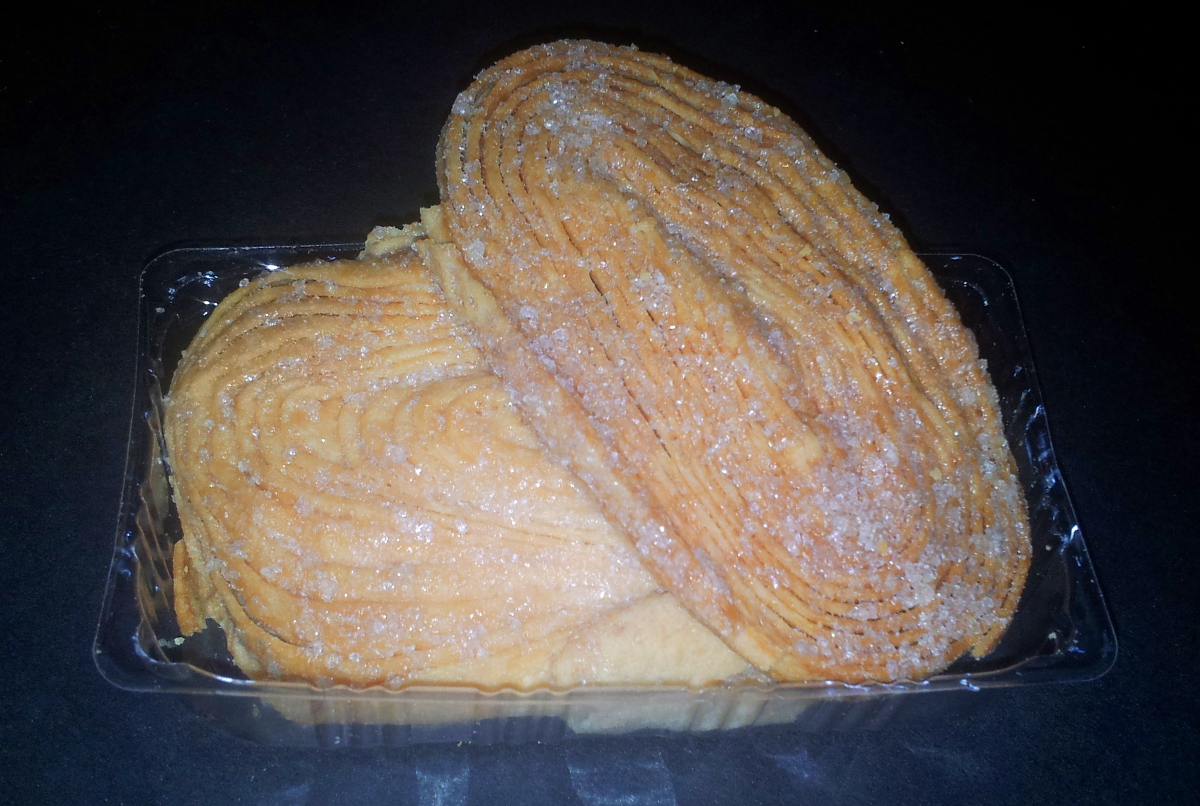
[...More Info...] [...Related Items...] OR: [Wikipedia] [Google] [Baidu] |
Chondrus Crispus
''Chondrus crispus''—commonly called Irish moss or carrageen moss ( Irish ''carraigín'', "little rock")—is a species of red algae which grows abundantly along the rocky parts of the Atlantic coast of Europe and North America. In its fresh condition this protist is soft and cartilaginous, varying in color from a greenish-yellow, through red, to a dark purple or purplish-brown. The principal constituent is a mucilaginous body, made of the polysaccharide carrageenan, which constitutes 55% of its dry weight. The organism also consists of nearly 10% dry weight protein and about 15% dry weight mineral matter, and is rich in iodine and sulfur. When softened in water it has a sea-like odour and because of the abundant cell wall polysaccharides it will form a jelly when boiled, containing from 20 to 100 times its weight of water. Description ''Chondrus crispus'' is a relatively small sea alga, reaching up to a little more than 20 cm in length. It grows from a discoid hold ... [...More Info...] [...Related Items...] OR: [Wikipedia] [Google] [Baidu] |
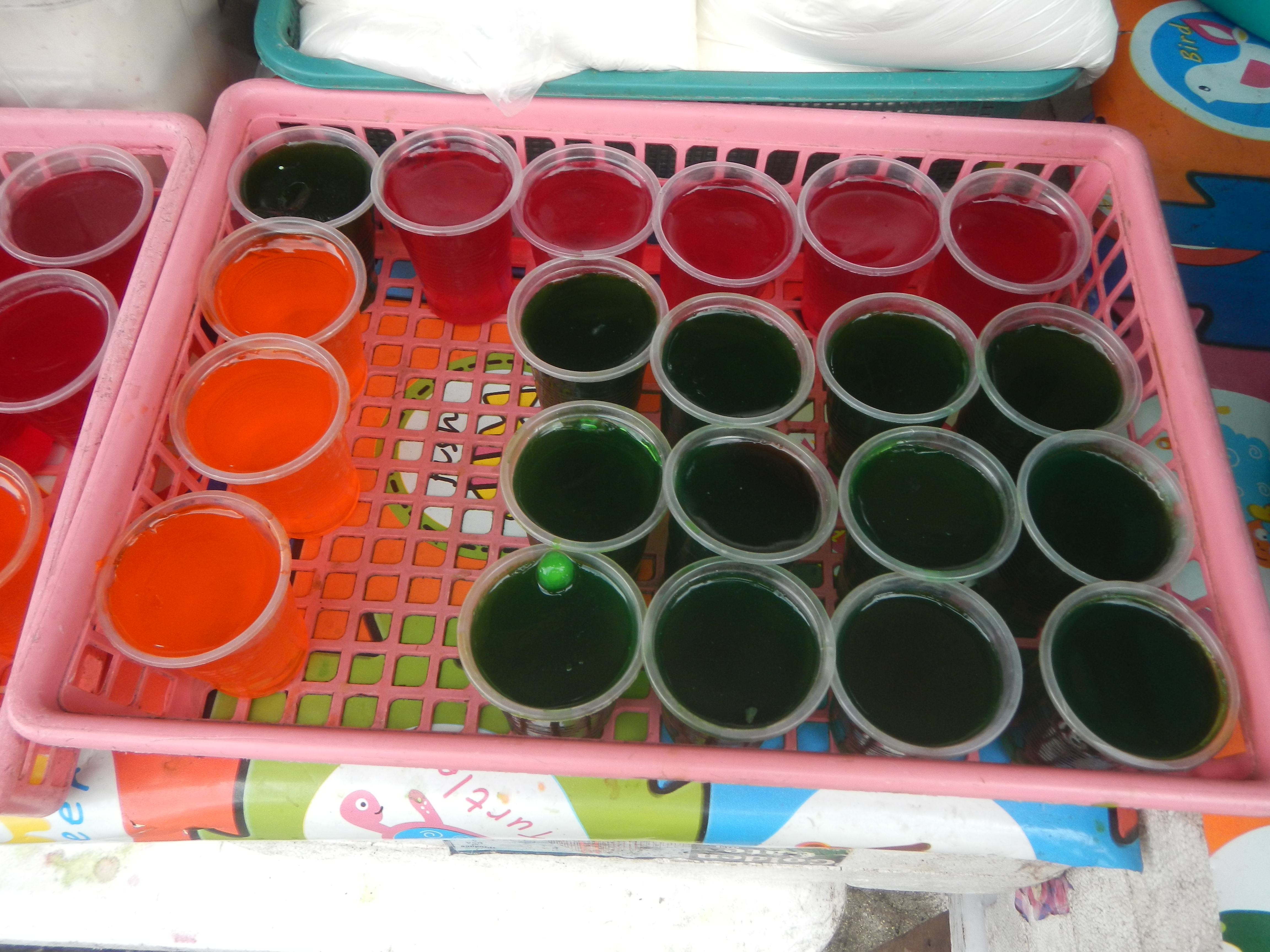
.jpg)

